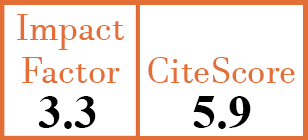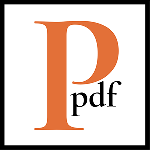Full Papers
Assessment of joint inflammation at the wrist of patients with rheumatoid arthritis: thermography findings closely mirror those from ultrasonography
Y.K. Tan1, G.H. Lim2
- Department of Rheumatology and Immunology, Singapore General Hospital; Duke-NUS Medical School, Singapore; and Yong Loo Lin School of Medicine, National University of Singapore, Singapore. tan.york.kiat@singhealth.com.sg
- Health Services Research Unit, Singapore General Hospital, Singapore.
CER17151
2024 Vol.42, N°5
PI 1051, PF 1056
Full Papers
Free to view
(click on article PDF icon to read the article)
PMID: 38079337 [PubMed]
Received: 20/09/2023
Accepted : 13/11/2023
In Press: 07/12/2023
Published: 14/05/2024
Abstract
OBJECTIVES:
To determine if thermography (in comparison with ultrasonography) may be helpful in detecting joint inflammation at the RA wrist categorised according to its clinical manifestations.
METHODS:
Four wrist groups were derived from the right wrist of RA subjects as follows: (1) swollen; tender (S1T1); (2) swollen; non-tender (S1T0); (3) non-swollen; tender (S0T1); (4) non-swollen; non-tender (S0T0). Thermographic parameters included the maximum (Tmax), average (Tavg) and minimum (Tmin) temperatures. Ultrasound parameters included the Total PD (TPD) and Total GS (TGS) scores. One-way ANOVA and Kruskal-Wallis test (for normally and non-normally distributed imaging parameters, respectively) and subsequent post-hoc tests were carried out for the comparative analysis of the wrist groups.
RESULTS:
A total of 70 wrist joints of 70 RA subjects were included in this cross-sectional study. For all imaging parameters (Tmax, Tavg, Tmin, TPD and TGS), statistically significant differences (all p<0.05) were detected (a) between the 4 wrist groups using either the one-way ANOVA or Kruskal-Wallis test and (b) for subsequent pairwise comparison of wrist group 1 (S1T1) vs. group 4 (S0T0) and group 2 (S1T0) vs. group 4 (S0T0). No significant differences (all p>0.05) were found for pairwise comparison of wrist group 3 (S0T1) vs. group 4 (S0T0) for all imaging parameters.
CONCLUSIONS:
Thermography at the wrist appears promising in RA with its findings closely mirroring those from ultrasonography. Swollen joints (regardless of tenderness status) have higher joint surface temperatures and greater ultrasound-detected joint inflammation, findings which were not observed for tender only (non-swollen) joints.


